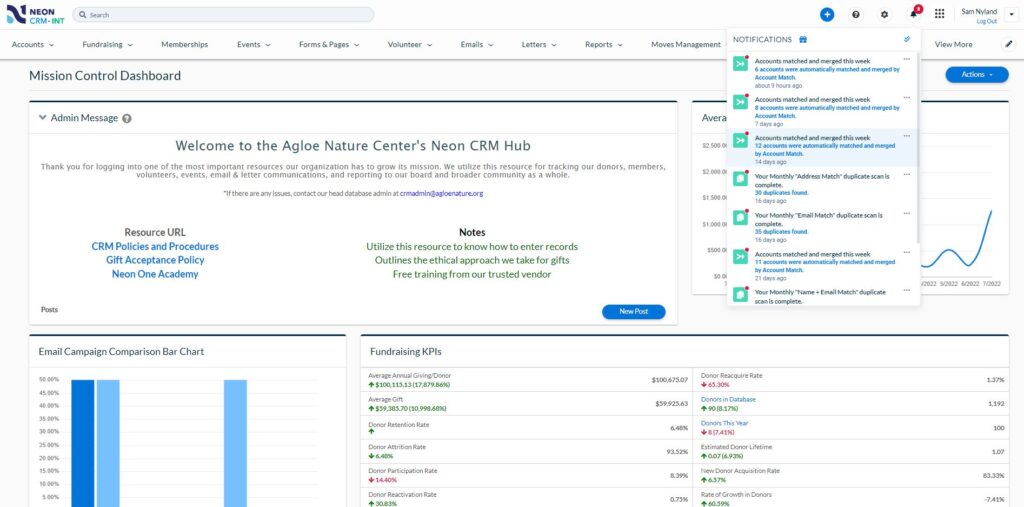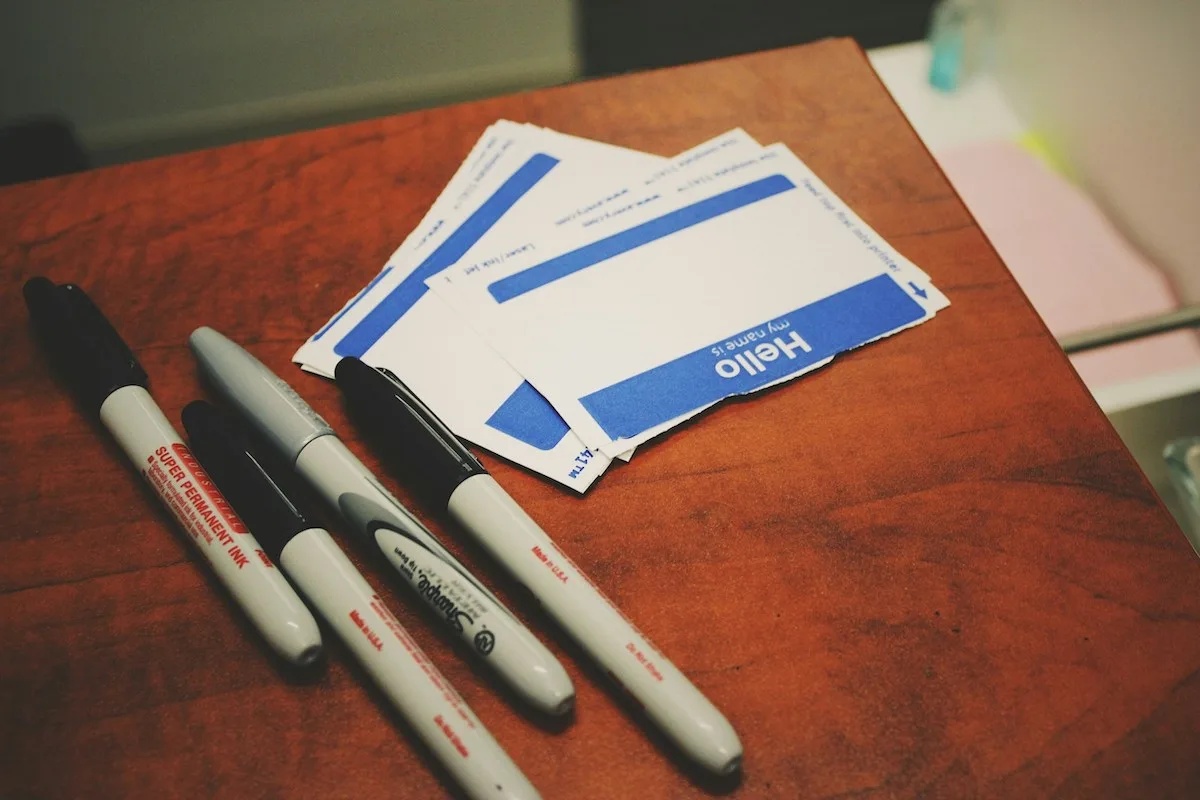
Corporate social responsibility is frequently a hot topic, but actually finding a corporate sponsor can feel like navigating the Wild West. There are no roadmaps—not because it’s impossible, but because there is no universal standard when it comes to corporate sponsorships for nonprofits.
In this guide, we’ll lay out 10 expert tips for finding and winning corporate sponsors for your organization. If you’re in a mega-hurry, here’s the full list.
- Seek Companies with Similar Audiences
- Personalize Your Pitch
- Be Open to Having Conversations
- Be Clear About Your Needs
- Don’t Rush Into It
- Know What You’re Willing and Able to Offer…
- …And Know What You Can’t Offer
- Communicate Your Expectations Clearly
- Equip Your Donors to be Advocates
- Use Your Data to Tell a Compelling Story
That’s a lot to cover, right? So let’s get started!
What is a Corporate Sponsorship?
If you’ve ever attended a nonprofit event and noticed the materials say “sponsored by [insert corporation name here],” you’ve witnessed a corporate sponsorship in action.
Corporate sponsorships are partnerships between a business and a nonprofit that exchange financial support for a positive brand association and tax deductions.
In a corporate sponsorship, nonprofit organizations receive vital donations and the business is able to publicly align itself with the nonprofit’s mission and present its brand as generous and philanthropic.
Finding Corporate Sponsorships for Your Nonprofit

So, how do you find a corporate sponsorship for your nonprofit? And, more importantly, how do you convince them to invest in your cause?
Let’s dive into our five favorite tips for identifying corporate sponsors and delivering on what they want from your nonprofit.
Tip #1: Seek Companies with Similar Audiences
When you’re beginning your research, look for organizations that share your same audience. Identifying companies that have something in common with your work will make it much easier to build a reciprocal relationship and form a corporate sponsorship.
For example, take a nonprofit like Friendship Circle of Michigan that raises money to provide adaptive bikes for families with special needs children. They might look for companies that sell bikes or athletic gear.
Consider partnerships with local businesses in your search, too. While they may not be multi-billion-dollar corporations, they likely have valuable connections with the local audiences you’re trying to reach.
Google alerts are a great way to find local or regional companies that share similarities with your mission. Have your development team set a few search alerts up to streamline opportunity tracking!
Tip #2: Personalize Your Pitch
Unlike grants, which are financial donations given to nonprofits after an application process, corporate sponsorships benefit both the sponsor and the nonprofit. It’s a relationship that’s focused around the needs of both parties.
Just as each nonprofit has distinct missions and corresponding needs, so do corporations. As tempting as it can be to lead with your organization’s mission, it’s also important to communicate what your nonprofit can offer in a sponsorship.
Customize your general partnership materials before reaching out to any organization. Be clear about what you do and how a corporate sponsorship can make an impact in your community.
If the organization seems interested in working together, make it even easier for them to say yes! Come prepared with a couple of different proposed partnership ideas, like a social media contest or an event sponsorship. This allows the business to have a clear view of what a partnership would look like with your nonprofit and what they would get in return.
Tip #3: Be Open to Having Conversations
Opportunities are everywhere. Not all conversations will end in a formal corporate sponsorship with a two-year contract and hundreds of thousands of dollars, so keep your eye out for opportunities for smaller sponsorships.
Give people good reasons to meet with you, get them excited about your work, and develop the relationship from there. There is no big corporate sponsorship directory, so the only way to know whether or not a company would work well with your nonprofit is by asking.
Tip #4: Be Clear About Your Needs
Being clear about your organization-wide goals and plans will allow you to have more productive conversations with potential corporate sponsors as you begin reaching out.
Do you need a corporate sponsor to offset food costs at your big annual gala? You probably wouldn’t want to ask a very small business for that level of sponsorship. Do you need a local company to donate items for a silent auction? That small business may be the perfect partner!
These details will help you and your staff make effective proposals instead of wasting time and energy reaching out to sponsors that don’t fit what you need.
Tip #5: Don’t Rush Into It
Building and maintaining sponsorships are big time and energy commitments. Before entering a nonprofit corporate sponsorship relationship, stop and think about what you can and can’t offer to your community partners.
Being upfront and clear about what you can offer will help you find the right sponsor for your organization. Focus on fostering relationships and check in regularly to see if any new opportunities have opened up.
A potential sponsor may not be a good fit today, but they might be a good fit tomorrow.
How Nonprofits Can Win Corporate Sponsorships

Once you’ve found a potential corporate sponsor and set up a meeting, it’s time for you to wow them. Easy, right?
Not exactly, but getting discouraged about your chances isn’t going to help, either. On the contrary, there are a ton of ways to make your nonprofit attractive to corporate sponsors, regardless of the size of your organization.
The trick is figuring out which way to choose! To help you narrow down your options, here are some of our favorite tips:
Tip #6: Know What You’re Willing and Able to Offer…
Now that you have an idea about what corporations want in a partnership, it’s time to take a step back and determine what your organization can offer a possible sponsor.
When determining what you have to offer, remember to include every department in this conversation. Sit down and discuss upcoming events, volunteer opportunities, and available reporting metrics.
This meeting will prepare you to walk into any sponsorship conversation confident in what your team can offer in return.
Tip #7: …And Know What You Can’t Offer
It’s essential to be clear about what you can contribute and lead with your offerings. But it’s equally important to understand the capacity and resource limits of your staff and volunteers before making promises you can’t keep.
By understanding what your nonprofit can’t offer, you can quickly weed out corporate sponsorship relationships that wouldn’t be a good fit for your organization. This will also be beneficial down the line when you create a written sponsorship agreement.
Tip #8: Communicate Your Expectations Clearly
Before entering a conversation with a potential sponsor, create organization-wide expectations with the different teams at your nonprofit. This is especially important if you’ll rely on other staff to fulfill your sponsorship obligations.
You may not think that providing daily metrics for a social campaign will be a big lift for your development team, but checking in with them first guarantees that it will be a manageable ask.
When corporate sponsorship expectations align with your nonprofit’s long-term goals, your team can enter a sponsorship search with confidence. Agreed-upon guidelines will help you find a sponsor that aligns with your mission and needs.
Tip #9: Equip Your Donors to be Advocates
Even when a donor fully supports your mission and delights in being a part of it, they may not think to share it with others in their lives. But securing corporate sponsorships for nonprofits is another area where donors can shine.
Encourage your most loyal supporters to advocate for your nonprofit and provide templates that make it easy for them to spread the word. They can make an even greater impact by sharing the opportunity to sponsor your organization with their employers.
Tip #10: Use Your Data to Tell a Compelling Story
Your data will help you articulate the connection between your sponsor’s dollars and your nonprofit’s outcomes. It’s essential to discuss data collection techniques when reviewing any and all sponsorship opportunities.
Track all sponsor-funded activities under the same campaign so you won’t have to sift through unorganized data when the time comes to run a report for your partnering company. This is crucial—there’s no better PR for a business than a story packed with meaningful data.

As you prepare to pitch a corporate partner, explore your nonprofit’s donor management software to see what tools the system has available to help you.
In Neon CRM, you can add contacts for top decision-makers, notes on past convos and insights, communication reminders, and a full suite of analytics tools that you can use to build customized reports.
Using your nonprofit CRM to manage your relationship with a corporate sponsor will help set the partnership up for long-term success—transforming a one-time contribution into dedicated, annual support.
You can read more about using your CRM to manage corporate relationships in the article below!
A Step-by-Step Guide to Forming Corporate Sponsorships
Are you a fundraiser who wants to start developing corporate sponsorships for your nonprofit but isn’t sure how to get started?
Our friends at Double the Donation created a resource just for you that dives into more detail on what it takes to build a corporate sponsorship relationship and ask for support. Download the free guide below!
Join the discussion in our Slack channel on connected fundraising








